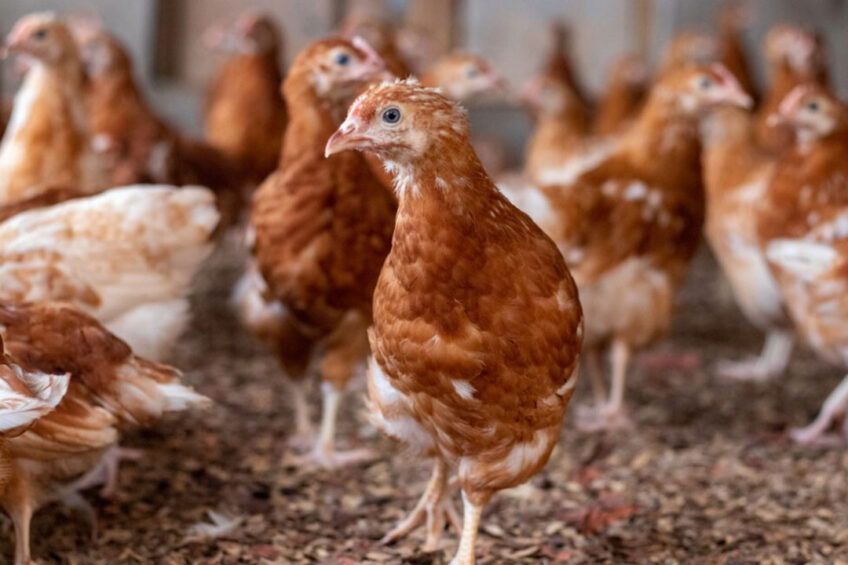Antibiotic use indicators met by UK layer and broiler sectors

The UK’s laying hens and poultry meat sectors continued to use fewer antibiotics last year despite the twin threat of highly pathogenic avian influenza and the Covid-19 pandemic.
Antibiotic usage data from members of the British Egg Industry Council Lion Scheme for 2021 showed usage below the 1% days treated target set by the voluntary Responsible Use of Medicines in Agriculture Alliance (RUMA), and no Highest Priority Critically Important Antibiotics (HP-CIA) were used in the sector for the 4th year running.
The RUMA annual report said that overall, the laying hens sector recorded a total of 2.46 tonnes of antibiotic active ingredient use in 2021, which represents a notable reduction in usage compared to 2020, which saw 3.1 million tonnes used. 0.33 actual bird days were treated per 100 birds during 2021, compared to 0.47 in 2020.
Avian influenza
While highly pathogenic avian influenza affected the poultry sector from autumn 2020, carrying on through the winter and into spring 2021, the laying hens’ sector was relatively unaffected until the autumn/winter of 2021. Mandatory housing of free-range flocks came into effect in December 2020 and was lifted at the end of March 2021 before returning in November.
However, despite the effects of avian influenza and the Covid-19 pandemic, the significant drop in antibiotic use in laying hens owes much to heightened biosecurity practices in the sector and the ongoing use of vaccines as part of preventative health programmes across the industry.
Antibiotic use in broilers and turkeys
In the poultry meat sector, antibiotic use fell from 16.3mg/kg PCU in 2020 to 13.66 mg/kg PCU last year, well below the ceiling of 25mg/kg PCU for broiler production reviewed in 2021. However, there was a rise in the usage in turkeys following a disease challenge that required the most effective antibiotic following veterinary consultation. The treatment did not require the use of any CIAs, but it resulted in an increase in the mg/kg PCU from 25.7mg/kg in 2020 to 42.55 mg/kg last year – still under the 50 mg/kg PCU sector-specific target.
Fit for purpose
The report praised the British Poultry Council’s Antibiotic Stewardship approach to treatment in real-time and in response to specific disease challenges, saying it always strived to keep antibiotics effective and fit for purpose and only used when necessary. CIAs (Fluoroquinolones, Macrolides, Polymixins) are used only as a last resort and only after other treatments have been considered.
The BPC Antibiotics Stewardship continue its work to understand where further improvements can be made, including looking at alternative interventions and into the granular design of reason for usage. The sector is currently in the middle of the worst case of avian influenza seen, not just in the UK but across Europe, which is devastating businesses. Combined with rising production costs, ongoing labour shortages and challenging EU-UK trade conditions, British poultry meat businesses are being pushed to capacity but were determined to ensure responsible usage of antibiotics remained a priority for producers, the report added.
A collaborative, voluntary effort
Cat McLaughlin, RUMA chair and chair of the RUMA Targets Task Force 2, said it was important to reiterate that the falls in antibiotic use had been achieved through a collaborative, voluntary effort.
“The successes to date across the industry has put the UK ahead of most food-producing EU countries, and the current RUMA targets up to 2024 further reinforce the ongoing commitment across all the sectors to achieve sustainable reductions.”
The lowest sales to date
Abigail Seager, Veterinary Medicines Directorate chief executive, said she was delighted with the continued progress in this year’s Veterinary Antimicrobial Resistance and Sales Surveillance (VARSS). Sales for food-producing animals (mg/kg) have fallen from 62.3 mg/kg in 2014 to just 28.3mg/kg last year, which is a fall of 55% and the lowest sales to date.
Sales of HP-CIAs in all food-producing animals account for just 0.4% of total sales and have dropped from 0.14mg/kg in 2020 to 0.12mg/kg – an 18% decrease.
Total tonnage sales for all animals have fallen from 447 tonnes in 2014 to just 212 last year.












